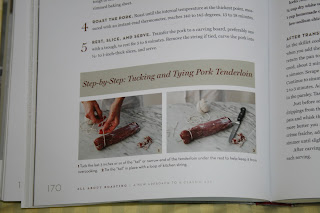 |
| Seared Roast |
The simplest approach to roasting is placing seafood, veggies, and seasoned meat on a roasting pan, and sliding it into an oven temperature 400 or higher. The greatest benefit of high heat cooking is that foods develop a well seared exterior with a juicy savor, rare or medium rare interior. This is exactly how I like my steak. Be careful not to over cook them. Nothing is worse that rubbery meat. Roasting meat can require split second timing, you have to really baby-sit the meat. The major limitation is that high heat cooking does not work well with larger roasts. For example, large meats like Turkey or Leg of Lamb will be burnt and crusty on the outside by the time the inside is cooked. Frequent oven cleaning becomes a problem. Juices splatter and the flesh smokes the interior.
This technique works well with vegetables. They turn incredibly tender and sweet in ovens heated 400 or above.
If you want to roast vegetables that have a high water content, like onions and tomatoes, roast them at a lower heat, 275 would be good. This is also the way to cook tougher meat cuts like shoulder, round, and leg and pork roasts. Slow roasting is a lot like barbecue, without the smoke. With slow roasting there is less moisture loss and foods cook more evenly. The amount of moisture forced from food during cooking relates directly to how aggressively it is heated. So, if you want your meat to be tender and juicy, cook it slowly
Why do cooked meats turn brown? As food cooks, moisture evaporates. The fats, proteins, and starches begin a series of reactions that form large, dark colored, savory, and aromatic molecules. These reactions change the flavor and appearance of food. This reaction produces hundreds of new flavor compounds that cam be described as floral, savory, earthy, meaty and savory.









0 comments:
Post a Comment